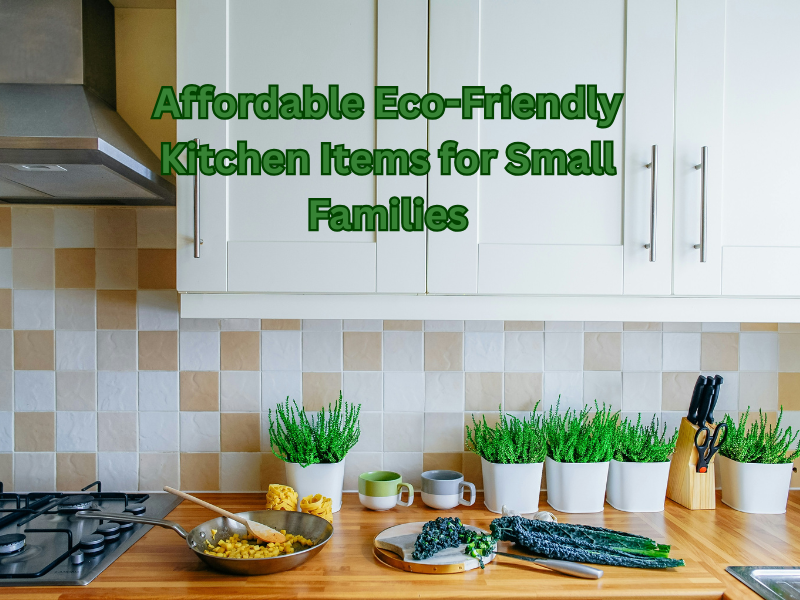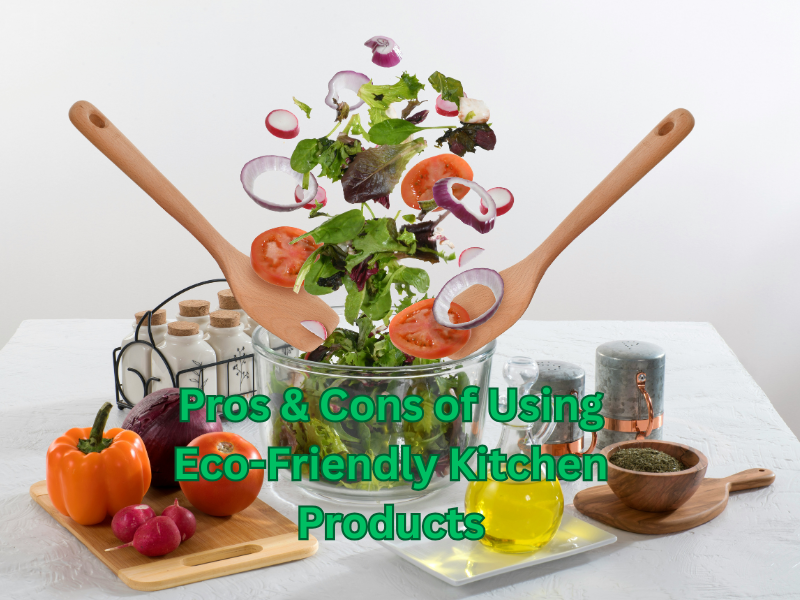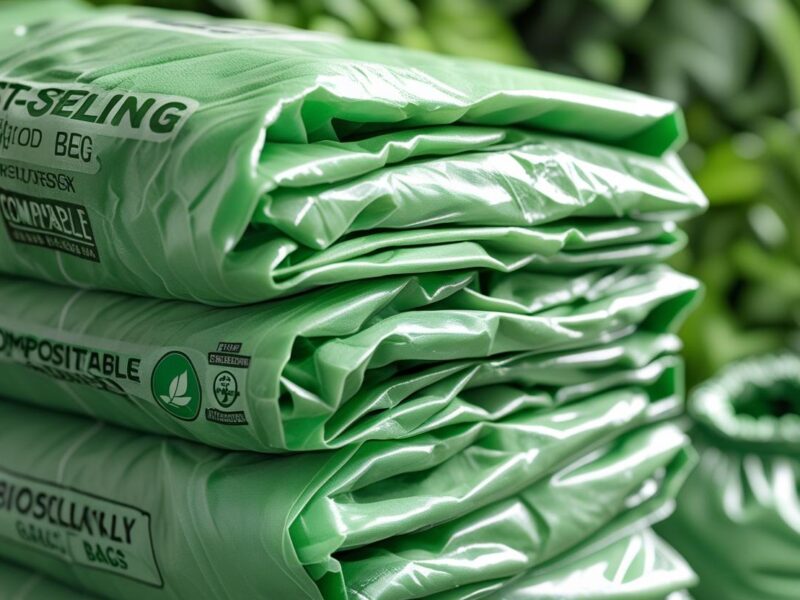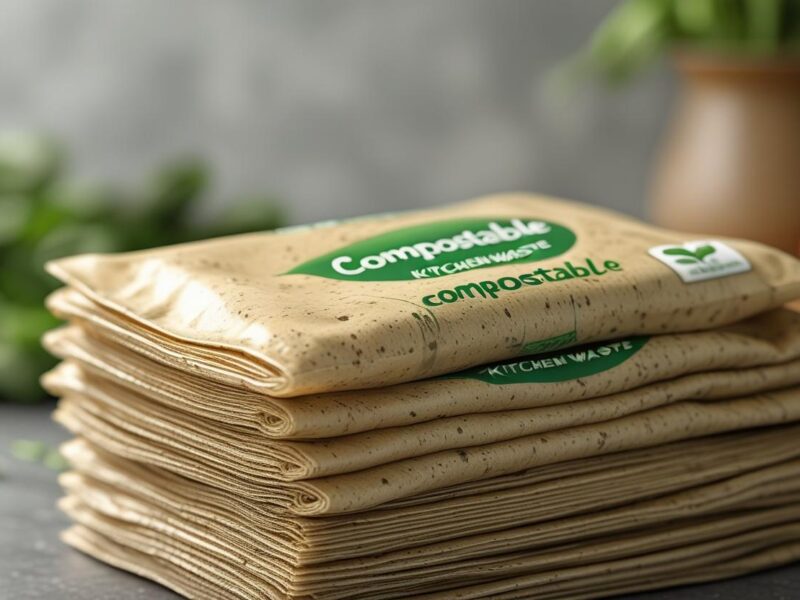Introduction
Are you tired of all the plastic waste piling up in your kitchen? Wondering how you can cook more sustainably without sacrificing convenience or budget? You’re not alone.
In 2025, eco-conscious living is no longer just a trend — it’s a lifestyle. Across the USA, more families are switching to eco-friendly kitchen products, not just to protect the planet, but to save money, reduce toxins, and simplify their homes.
In this article, you’ll discover everything you need to start your zero-waste kitchen journey — from biodegradable utensils to sustainable cooking habits, natural cleaning solutions, and where to find the best eco-friendly products, even if you’re in Bangladesh.

How to Start Zero-Waste Cooking at Home
Zero-waste cooking means reducing food waste, avoiding plastic packaging, and using reusable or compostable materials.
Here’s how you can begin:
- Plan meals ahead: This reduces leftovers and impulse buying.
- Store food in glass jars or stainless steel containers instead of plastic.
- Compost food scraps like veggie peels and eggshells.
- Buy in bulk using your own cloth bags or jars.
Key Tips:
- Avoid single-use plastics (bags, wraps, utensils).
- Shop at local farmer’s markets for package-free produce.
- Repurpose food scraps into broths or sauces.
Best Biodegradable Kitchen Utensils for Daily Use
Switching from plastic to biodegradable tools can make a huge difference.
Top Biodegradable Kitchen Tools in 2025:
| Product | Material | Benefits |
|---|---|---|
| Bamboo Spatula Set | 100% Bamboo | Durable, heat-resistant |
| Cornstarch Cutlery | Corn-based | Compostable, lightweight |
| Coconut Shell Bowls | Natural Coconut | Stylish, reusable |
| Wooden Chopping Board | Hardwood | Long-lasting, knife-friendly |
These products break down naturally and don’t release toxins into the environment.

Affordable Eco-Friendly Kitchen Items for Small Families
Eco-friendly doesn’t have to mean expensive. In fact, some items help you save money long-term.
Budget-Friendly Eco Swaps:
- Reusable beeswax wraps instead of plastic wrap
- Cloth napkins instead of paper towels
- Glass food storage for leftovers
- Silicone baking mats to replace parchment paper
Most of these items are available on Amazon, Walmart, or local eco-stores at a reasonable price under $25.
Plastic-Free Kitchen Tips for Beginners
Going plastic-free doesn’t mean changing everything overnight. Start small.
Beginner Steps:
- Replace one plastic item per week
- Use mason jars for dry goods
- Buy refillable cleaning supplies
- Choose bar dish soap over liquid in plastic bottles
Consistency is key. You’ll see noticeable changes in just a few weeks.
Eco-Friendly Ways to Reduce Kitchen Waste
Kitchen waste includes food scraps, packaging, and expired goods. Here’s how to cut it down:
- Start composting at home or with a community garden
- Avoid overbuying groceries
- Freeze leftovers for future use
- Donate excess non-perishable food
Every small action adds up — even just switching to bulk bins can eliminate dozens of plastic packages per year.
Sustainable Cooking Habits to Save Money and the Environment
Cooking sustainably means making smarter choices in the kitchen.
Habits Worth Adopting:
- Cook at home more often (less takeout = less packaging)
- Use energy-efficient appliances
- Cook in batches and store meals
- Eat more plant-based meals
Bonus: These habits also lower your grocery bill!
Where to Buy Eco-Friendly Kitchen Products in Bangladesh
If you’re in Bangladesh and want to switch to green kitchen tools, good news — options are growing!
Local & Online Stores:
- Daraz Bangladesh – Search for “eco kitchen”
- Green Grocery BD – Specializes in reusable and biodegradable products
- Facebook eco-friendly groups – Many small businesses sell direct
Look for products labeled “BPA-free,” “biodegradable,” or “natural materials” for safety.
Benefits of Bamboo Kitchen Tools Over Plastic Ones
Bamboo is one of the most sustainable materials on earth. It grows fast, requires no fertilizer, and is naturally antibacterial.
Bamboo vs. Plastic – Why It Wins:
- Doesn’t release toxins when heated
- Biodegrades naturally
- Stylish, lightweight, and strong
- Doesn’t scratch cookware
Investing in bamboo utensils means reducing microplastic consumption in your food.
Natural Cleaning Solutions for an Eco-Friendly Kitchen
Cleaning doesn’t require harsh chemicals. In fact, natural alternatives are safer and often cheaper.
DIY Eco-Friendly Cleaners:
- Vinegar + Baking Soda – Great for countertops, sinks
- Lemon + Salt – Perfect for cutting boards
- Castile Soap + Water – All-purpose cleaner
Use reusable cloths instead of paper towels for a zero-waste approach.

Pros & Cons of Using Eco-Friendly Kitchen Products
| Pros | Cons |
|---|---|
| Better for the environment | May cost more initially |
| Safer for your health | Some products require extra care |
| Reduce plastic and waste | Availability may vary |
| Long-term cost savings | Not all products are equally durable |
FAQs
1. Are eco-friendly kitchen products expensive?
Not necessarily. While some items have a higher upfront cost, they last longer and save you money in the long run.
2. How do I know if a product is really eco-friendly?
Look for certifications like BPI Compostable, BPA-Free, or USDA Organic. Also, check the materials — avoid plastic, prefer bamboo, glass, or stainless steel.
3. Can I start a zero-waste kitchen in a small apartment?
Absolutely! Even small steps like reusable bags, glass jars, and compost bins can make a big difference in a tiny kitchen.
Conclusion
An eco-friendly kitchen isn’t built overnight — but with consistent, simple swaps, it becomes a habit. In 2025, there are more accessible tools than ever to help you live sustainably, cook cleanly, and protect both your family and the planet.


